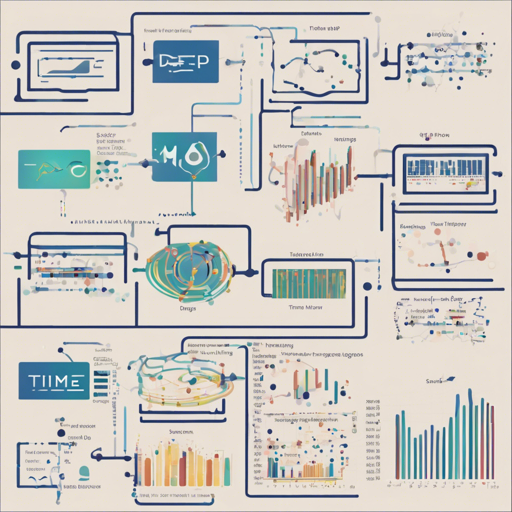In today’s data-driven world, understanding the realm of time series classification can empower various industries including finance, healthcare, and manufacturing. This article serves as a gateway into the fascinating world of deep learning and time series data, focusing on univariate time series as our starting point.
What is Time Series Classification?
A time series is a collection of data points indexed in time order, and univariate time series analysis studies a single variable over time. Classification involves determining the category of a given time series based on its features.
The Challenge of Time Series Classification
With traditional similarity measures like Dynamic Time Warping (DTW) and Euclidean Distance (ED) being established yet outdated, there’s a call for modern approaches. Recent advancements in feature engineering promise greater accuracy on UCR time series classification benchmarks.
Deep Learning Models
This repository introduces three powerful deep learning models: MLP (Multi-Layer Perceptron), FCN (Fully Convolutional Networks), and ResNet (Residual Networks). These models serve as efficient tools for conducting pure end-to-end time series analytics with interpretability.
Understanding the Deep Learning Models: An Analogy
Think of time series classification as a complex puzzle where each piece represents a snapshot of data at a specific time. Our aim is to sort these pieces into their correct boxes (categories). Each model serves as a unique sorting machine:
- MLP: This acts as a skilled worker who suggests placements based on intuition. It’s simple and effective but not as flexible in handling complex puzzles.
- FCN: Imagine a dynamic worker using a systematic approach, analyzing all neighboring pieces at once for final sorting — more efficient and quick.
- ResNet: This is like a supervisor overseeing multiple workers, allowing them to leap over mistakes by periodically reviewing the placement process. It can tackle even the trickiest puzzles successfully.
Localizing Contributing Regions with Class Activation Map
The artistry of FCN and ResNet is further heightened by incorporating Class Activation Maps (CAM). These maps shed light on how our models determine which parts of the time series data contribute to judgments, providing a tangible sense of interpretability.

Visualizing Filter Weights
In analyzing depth, we use Gramian Angular Summation Field (GASF) to visualize filter weights within the networks. Like examining a chef’s tools, this helps uncover how different inputs contribute to the learning process.

Classification Results
Our models demonstrate remarkable success across a broad table of testing classification results on 85 UCR time series datasets. Performance metrics advocate for an adaptable framework that performs well across diverse applications.
| Dataset | MLP | FCN | ResNet | PROP | COTE | 1NN-DTW | 1NN-BOSS | BOSS-VS |
|----------------------|--------|--------|--------|--------|--------|---------|----------|---------|
| 50words | 0.288 | 0.321 | 0.273 | 0.180 | 0.191 | 0.310 | 0.301 | 0.367 |
| Adiac | 0.248 | 0.143 | 0.174 | 0.353 | 0.233 | 0.396 | 0.220 | 0.302 |
| ArrowHead | 0.177 | 0.120 | 0.183 | 0.103 | 0.337 | 0.143 | 0.171 | |
...
| Total Patterns | 0.403 | 0.271 | 0.265 | | 0.337 | 0.243 | 0.315 | |
| Best | 6 | 27 | 21 | 14 | 10 | 4 | 21 | 9 |
Troubleshooting
If you run into issues while implementing deep learning for time series classification, consider the following tips:
- Ensure all dependencies like Keras (Tensorflow backend) and Numpy are correctly installed.
- Adjust hyperparameters systematically to refine model performance.
- If your implementation yields unexpected results, review the preprocessing steps for potential errors.
- For advanced troubleshooting, explore community forums or refer to academic papers for similar case studies.
For more insights, updates, or to collaborate on AI development projects, stay connected with fxis.ai.
Conclusion
At fxis.ai, we believe that such advancements are crucial for the future of AI, as they enable more comprehensive and effective solutions. Our team is continually exploring new methodologies to push the envelope in artificial intelligence, ensuring that our clients benefit from the latest technological innovations.

